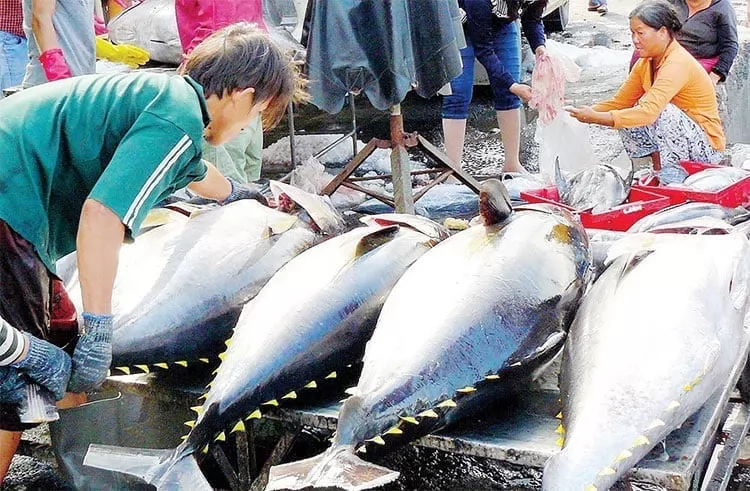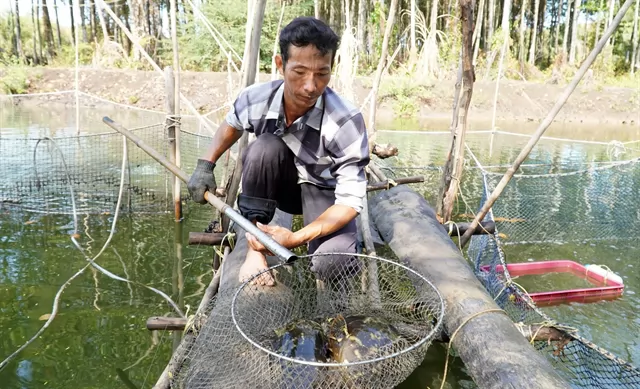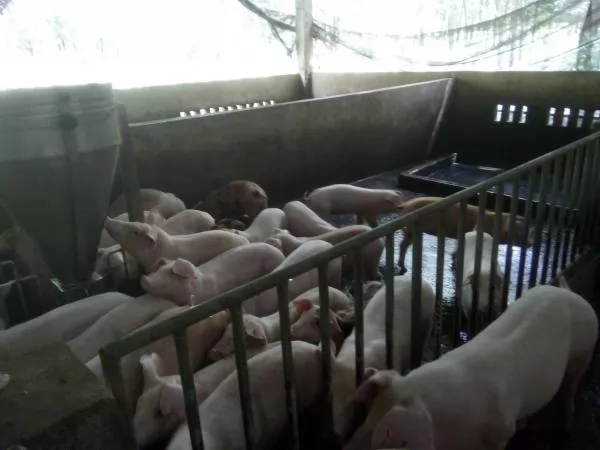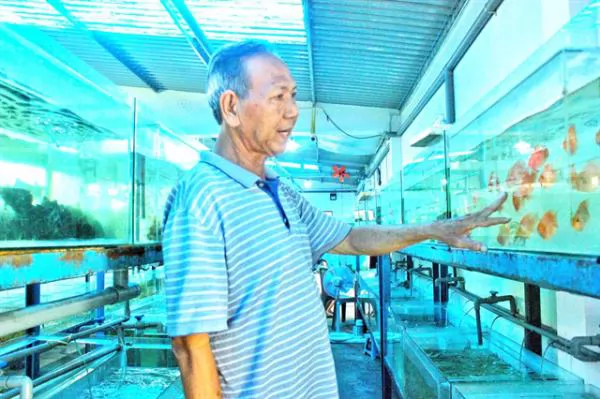Tuna enterprises struggling to find a way out

Tuna exports face “double” challenges. Photo: Minh Hieu.
(VAN) Facing barriers from major markets such as the US and the EU, Vietnam’s tuna enterprises are striving to find new markets.
Barriers upon barriers
Vietnam’s tuna exports are under heavy pressure from both external and internal challenges. In the past, the industry had to grapple with the EU’s IUU “yellow card.” Now, the US, the largest consumer market, has introduced additional trade barriers.
Mr. Nguyen Van Minh, Director of Nghi Son Seafood Import-Export Co., Ltd., said that starting January 2026, the US will implement new regulations on marine resource protection. This means seafood caught from the ocean must comply with even stricter standards. “Enterprises have only three months left to prepare, but the compliance pressure is tremendous. Especially since raw materials mainly come from traditional fishing, meeting international requirements is by no means easy,” he shared.
Mr. Vu Dinh Dap, Chairman of the Vietnam Tuna Association, analyzed that under the Marine Mammal Protection Act (MMPA), managed by the National Oceanic and Atmospheric Administration (NOAA) under the US Department of Commerce, any country that wants to export seafood to the US must demonstrate that its fishing practices do not cause harm to marine mammals. This is a prerequisite for Vietnamese tuna to maintain its foothold in the world’s number-one market.
He added that, apart from these international legal pressures, Vietnamese enterprises are also facing additional challenges at home. Government Decree 37, which prohibits the capture of fish smaller than 500 mm along with several new adjustments related to export goods, has had a direct impact on yellowfin tuna - a species that plays a crucial role in the canned tuna industry. Since canned tuna alone makes up more than 40% of the sector’s total export revenue, any restriction on this supply chain creates significant disruptions.
“As a result, many tuna exporters are being forced to import raw materials from abroad, particularly from countries such as Thailand, in order to maintain their production lines,” Dap stressed. “However, the cost of imported raw fish is very high, while at the same time, local fishermen are finding it increasingly difficult to sell their catch."
Enterprises seeking a way out
Despite facing numerous challenges, Vietnam’s tuna industry is still showing some encouraging signs. According to Ms. Nguyen Ha, a tuna market expert at VASEP, tuna exports in August 2025 recorded a slight recovery, reaching more than USD 91 million, up 1.4% compared to the same period last year. Cumulatively, in the first eight months of the year, export value stood at nearly USD 633 million - a decline of 2.3% year-on-year, though the rate of decrease has clearly slowed.
While exports to the US continued to fall sharply, the pace of decline has eased, with turnover reaching USD 29 million in August. The EU remained the second-largest market with USD 17 million, up 6% compared to the same period, with the Netherlands and Italy standing out with increases of over 40%. Japan also delivered a surprising surge, with an 88% increase in August, while Canada maintained steady growth. Emerging markets such as Russia, the Philippines, and especially Thailand also posted strong gains.
According to Ms. Ha, this provides a basis for expecting tuna exports to rebound thanks to rising year-end demand. However, difficulties relating to raw material prices, logistics costs, and especially legal barriers remain unchanged. “The key point is to help both enterprises and fishermen adapt to new regulations, whether from the US under the MMPA, or domestic rules such as Decree 37. Otherwise, we will continue to lose our competitive edge against rivals like Ecuador, Indonesia, or the Philippines,” she emphasized.
In this difficult context, Mr. Minh noted that businesses are compelled to seek new markets as a way forward. Yet replacing a major market like the US is not something that can be done overnight—it could take half a year or even longer, and may still not fully offset the losses. In reality, entering a new market is a lengthy process. For example, Singapore enforces extremely strict regulations: once an agreement is signed, compliance must be absolute, with no room for negotiation or last-minute changes.
“We have to seize every opportunity at international trade fairs to connect with customers. Since the beginning of the year, our company has actively joined major events such as the 2025 North America Seafood Expo and the Global Seafood Expo in Barcelona, Spain. Coming up, we will also participate in the Seafood Fair in China to further expand our market share in Asia,” Mr. Minh shared.
Author: Ha Duyen
Translated by Phuong Linh
Maybe you are interested

Mekong Delta breeds aquatic creatures in forests to mitigate climate change effects
Breeding shrimp and other aquatic species in mangrove forests in the Cửu Long (Mekong) Delta both offers a steady income to households protecting forests and improves conservation.

Hung Yen: Developing a collective economic model through developing occupational farmers' group
Determining the participation in the agricultural development is the most important political task, all levels of the Union in the province have encouraged members to raise awareness, change production practices, methods from self-sufficient production to production of goods with added economic value for domestic plants and animals; plan specialized production...

Creativity helps fish farmer gain success, help his peers
HCM CITY — Thanks to advanced science and technology, Tống Hữu Châu, an owner of a fish farm in HCM City's District 12, has built a brand for his ornamental fish and his products have been exported to the US and EU.





